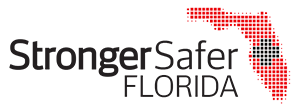
As reported by the News Service of Florida, the Florida Building Commission is considering updates to the statewide building code that would enable buildings to better withstand the damaging winds and water intrusion associated with hurricanes. Sealing rooftop decks to prevent water intrusion and stronger wind resistance requirements for vinyl siding are under discussion.
Not currently up for consideration is strengthening the wind resistance requirements for buildings in the Florida Panhandle, where it is currently far less stringent than other parts of the state, as evidenced by the destruction caused last year by Hurricane Michael’s 160+ mph winds.
As recovery in the Panhandle continues, those rebuilding homes and businesses should consider building beyond code, which is the bare minimum required to make a structure safe. Resilient design, construction and materials will increase the likelihood that new homes and buildings will fair far better in future storms. There are many low-cost measures, such as hurricane ties and windstorm plywood, that can strengthen homes and businesses against the impacts of future storms.
The full article, which appeared in several news outlets across the state, is below.
Building improvements eyed to withstand hurricanes
By Christine Sexton, The News Service of Florida
Posted: 7:30 PM, October 14, 2019
TALLAHASSEE, Fla. – Rooftop wooden decks may offer the perfect getaway space for homeowners, but they need to be built to better withstand hurricanes, members of a Senate panel were told Monday.
Thomas Campbell, executive director of the Florida Building Commission, gave members of the Senate Community Affairs Committee a quick summary of tentative changes approved by the 27-member commission, including additional mitigation requirements for rooftop decks. Those requirements, at least in part, would be aimed at ensuring decks are sealed to prevent water intrusion.
Commission members also have given tentative approval to more-stringent wind resistance requirements for vinyl siding and potentially requiring “in progress” inspections when exterior wall coverings such as vinyl siding are being applied.
The Florida Building Commission considers updates to the statewide building code every three years. Members are discussing the seventh iteration of the code.
The public will have an opportunity to comment on the tentative changes during public meetings in February and April, Campbell told senators.
A new statewide building code is expected to be finalized by December 2020, Campbell said.
The Florida Legislature authorized the initial statewide building code in 2000. It went into effect two years later, replacing local ordinances and rules that once regulated building construction across the state.
Though it’s a statewide code, it includes different requirements for wind resistance in certain areas of the state.
South Florida has the toughest wind resistance requirements; the building code requires that buildings be able to withstand 175 mph winds.
But the requirements in the Florida Panhandle, which in the past was considered less susceptible to hurricanes, are less stringent. Buildings in rural, non-coastal areas of the Panhandle are required to withstand 120 mph winds. In coastal Pensacola, the buildings are required to withstand 150 mph winds.
None of the tentative changes that Campbell told lawmakers about included changes to wind resistance.
The discussion about changes in the building code came just days after the one-year anniversary of Hurricane Michael, which caused massive damage in Northwest Florida.
University of Florida professor David Prevatt submitted a report on Hurricane Michael and the damage caused when it made landfall as a Category 5 storm in Mexico Beach on Oct. 10, 2018.
The storm caused devastation in coastal areas but also caused heavy damage in more inland areas of the Panhandle that aren’t usually as directly threatened, such as in Calhoun, Liberty and Jackson counties.
Prevatt has a contract with the state to review damage of any category 3, 4 or 5 hurricane that hits the state, Campbell told senators.
Prevatt observed that older housing stock that was built before the statewide building code went into effect sustained significantly more damage from Hurricane Michael than newer homes that were built to meet more-stringent codes.
Nevertheless, Prevatt noted that even in homes built to meet the new codes, three areas sustained “consistent failures:” vinyl siding; soffits and partial roof coverings.
He also observed that the “largest contributing factor” to devastating damage was the elevation of buildings’ ground floors relative to the height of the storm surge.
Prevatt’s findings following Hurricane Michael were similar to findings in damage reports he submitted to the state following hurricanes Irma and Matthew.
Stronger Safer Florida is a nonpartisan coalition comprised of businesses, consumer and environmental groups from throughout Florida. This diverse membership seeks to protect consumers before, during, and after catastrophic events impact Florida.
